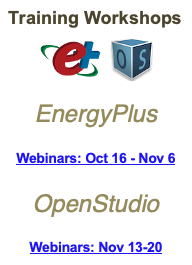Modeling air filter in EnergyPlus to capture particulates during natural ventilation between indoors and outdoors
I am attempting to incorporate a filter into my EnergyPlus model that captures fine particulates (PM2.5) as air flows between inside and outside through natural ventilation, or between zones. Something similar to the transparent window-mounted air filter discussed here by Liu et al..
My inclination is to model PM2.5 transport with the Generic Contaminant components and operable windows through Airflow Network objects such as AirflowNetwork:MultiZone:Component:SimpleOpening or AirflowNetwork:MultiZone:Component:DetailedOpening. Ideally I would specify the filter efficiency and perhaps a pressure drop across the filter.
Does anyone have advice on incorporating a filter to capture my generic contaminant (PM2.5) in the airflow network path? Am I on the right track with these components, or is there a workaround required?





